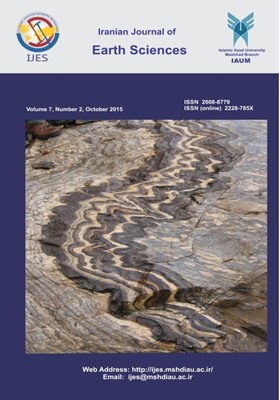Identification of Groundwater Potential Zones in Moalleman, Iran by Remote Sensing and Index Overlay Technique in GIS
Subject Areas : MineralogyShayan Ghodratabadi 1 , Faranak Feizi 2
1 - Young Researchers and Elite Club, South Tehran Branch, Islamic Azad University, Tehran Iran
2 - Mining Engineering Dept., South Tehran Branch, Islamic Azad University, Tehran Iran
Keywords:
Abstract :
Water plays a vital role in the development of activities in an area. The surface water resources are inadequate to fulfill the water demand. Productivity through groundwater is quite high as compared to surface water, but groundwater resources have not yet been properly exploited. Keeping this view, the present study attempts to select and delineate various groundwater potential zones for the assessment of groundwater availability in Moalleman, using the remote sensing and GIS technique. Satellite images such as Landsat 8, Aster and SRTM DEM data have been used in the present study to prepare various thematic maps for the study area, such as geology, geomorphology, soil hydrological group, land use/land cover, and drainage maps. According to the relative contribution of each of these maps towards groundwater potential, the weight of each thematic map has been selected. Furthermore, within each thematic map ranking has been made for each of the features. All the thematic maps have been registered with one another through integrated step-by-step using the normalized aggregation method in GIS for computing groundwater potential index. Based on this final weight and ranking, the groundwater potential zones have been delineated. Thus from the present study it has been observed that an integrated approach involving remote sensing and GIS technique can be successfully used in identifying potential groundwater zones in the study area. Five categories of groundwater potential zones: excellent, very good, good, moderate and poor have been demarcated. Major portions of the study area have “good” or “moderate” prospects, while a few scattered areas have poor prospects. The excellent potential areas are mainly concentrated along the shore line. This groundwater potential information is useful to effectively identify suitable locations to extract water. Lastly, the final map has been overlaid with the map of springs and qanats for comparison and rolling as a checkpoint.


